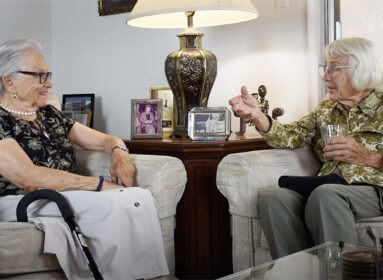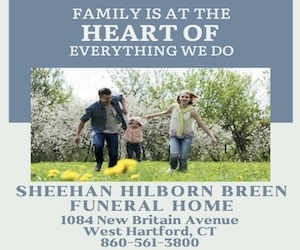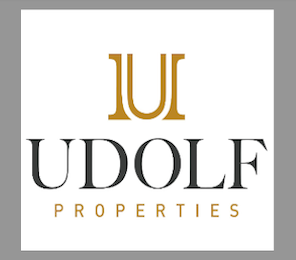
The Greenberg Center at Trinity CollegE marks a milestone
By Cindy Mindell
HARTFORD – There are plenty of examples of religious influence in politics, but perhaps none more resonant in recent Jewish memory than the assassination of Israeli Prime Minister Yitzchak Rabin by a far-right ultranationalist Israeli Jew in November 1995.
In the wake of the murder, then-Trinity College president Evan S. Dobelle attended a conference in Israel on fundamentalism and democracy and returned to Hartford to announce the establishment of the long-discussed Center for the Study of Religion in Public Life.
“Little did we know that this tragic event in Israel would provide such a historic context for the idea and concept Trinity has been developing,” Dobelle said at the Nov. 13 press conference.
Funded with seed money from Hartford native Leonard E. Greenberg, a Trinity alumnus, business leader, and philanthropist, the center opened its doors in fall 1996, led by Director Mark Silk. On April 30, 2000, the Center was renamed in honor of Greenberg.
Over its 20-year run, the center has had no shortage of opportunities to explore its mission, as religion seeps more and more into politics, and news is produced and disseminated in radically different ways. Through publications and programs, the Center works to advance knowledge and understanding of the varied roles that religious movements, institutions, and ideas play in the contemporary world; explore challenges posed by religious pluralism and tensions between religious and secular values; and examine the influence of religion on politics, civic culture, family life, gender roles, and other issues in the U.S. and elsewhere in the world.
Non-sectarian and non-partisan, the Center sponsors public lectures, organizes conferences and workshops, contributes to the liberal arts curriculum, and supports the publication and dissemination of materials for both academic and general audiences. Its initiatives are designed to foster discussion of religion in public life both within the campus community and among various external publics.
“For 20 years, the Leonard E. Greenberg Center for the Study of Religion in Public Life at Trinity College has added a much-valued dimension to our intellectual exchanges,” says Trinity’s President Joanne Berger-Sweeney. “The Center has attracted faculty and students to its lively seminars, and it has brought many thought-provoking speakers to campus. Under Mark Silk’s leadership, the Center’s publications have also advanced our understanding of the role of religion in the public sphere. We are indeed grateful for the Greenberg Center’s numerous and distinctive contributions over the years.”
Silk arrived at the director’s post with a PhD in medieval history from Harvard University and a decade-long stint as a reporter at the Atlanta Journal-Constitution. Author of Unsecular Media: Making News of Religion in America (University of Illinois Press, 1995), he was interested in larger questions about religion and public life in America, a focus that fit with the Center’s mission.
“The particular interest that we [at the Center] had at that time was enhancing the quality of journalistic coverage of reporting about religion, not just because of my background but also because the foundations interested in doing this stuff had a particular interest in ‘the media piece,’ as they liked to call it,” he says.
The Center received an initial grant from the Lilly Endowment to organize teams of academics who traveled around the U.S. talking to journalists about covering religion.
“What’s happening with religion in America is pretty different if you’re in Birmingham, Alabama or Santa Barbara, California or Hartford, Connecticut,” Silk says. “The idea was that newspaper coverage shouldn’t be the same across the country but should be based on the relevant issues of reporting where people were actually reporting.”
A large grant from the Pew Charitable Trust in 1997 to study “the journalism piece” allowed the Center to launch the biannual Religion in the News magazine and hire associate director Andrew Walsh. A graduate of Harvard University with a PhD in the history of American civilization, Walsh had worked for the Hartford Courant as reporter, bureau chief, and religion writer. In addition to serving as associate director of the center, Walsh is also managing editor of Religion in the News and a visiting assistant professor of history and religion at Trinity College.

Greenberg Visiting Fellow Jonathan Sarna, at the head of the table, speaks at a lunch with faculty and students.
When the Center and the magazine were established, religion was a “hot beat,” Silk says, and newspapers were very lucrative endeavors, with many of them adding a “faith and values” section to their content.
“This was considered important for a number of reasons, not just because it might help with declining newspaper penetration – because a lot of people go to church – but also, in the culture-wars context, to show that journalists actually ‘feel your faith’ and that newspapers that seemed like part of some elite culture were actually sensitive to religion,” he says. “Add to that the fact that politics matters a lot in religion: by the ‘90s, the religious right looked like it wasn’t just a flash in the pan but those social issues engaging religious conservatives were going to be around for a while.”
Within five years, the Center began to encounter competition. Religion reporters were being laid off or transferred to education beats. Graduate schools of journalism and larger research institutes that shared the center’s mission had more capacity for conferences and outreach.
When the Center was renamed in 2000, Leonard E. Greenberg explained his decision to provide an endowment, citing his commitment to the Center’s mission: a nonsectarian and nonpartisan examination of the influence religion has on politics, culture, the news media, and other essential aspects of public life. As a longtime Republican activist, Greenberg had been worried about threats to the separation of church and state coming from GOP members identified with the religious right.
“My concern stems from the fact that we Jews are a minority in this country—which has been very good to us, thanks to its tradition of religious pluralism,” Greenberg said at the rededication ceremony. “One of the reasons I’m active in Republican politics is to see that that party respects that tradition.”
Silk began a second five-year term as director in July 2001. From that year on, the Center began to take a different tack to its subject. Publication of Religion in the News continued. But Silk and Walsh decided to broaden the study of religion in public life from a strictly journalistic focus to an academic and general interest scope. The Lilly- and Pew-funded projects eventually resulted in Religion by Region, a nine-volume survey of eight regions of the U.S. and a summary volume (Altamira Press, 2004-2006) co-edited by Silk and Walsh and conceived to help journalists but also intended for a more general audience.
This comprehensive approach also informs the Center’s most recent series, The Future of Religion in America. The first volume, The Future of Evangelicalism in America (co-edited by Silk and Candy Gunther Brown), was published in April by Columbia University Press.
“What has helped make the Greenberg Center work is that, because we started out being interested in things that journalists would be interested in, that means we’re interested in things at a level at which undergraduates, non-specialists in the faculty, and the public at large would be interested,” Silk says. “Not technical, scholarly issues in the narrower sense but issues at the level of ‘What is ISIS?’ and ‘How is the latest Supreme Court decision on same-sex marriage affecting American politics?’ We generally concern ourselves with issues that people have heard of and that are contemporary, for the most part, and that people need to get up to speed on. Religion is such a varied and complicated set of issues and circumstances and is involved with all the other concerns that people have in the world.”
The Greenberg Center co-sponsors programs on campus to help students and faculty process these questions around religion in society.
“There’s no end of stuff to deal with and no end of stuff to have to try to get up to speed on,” Silk says.
In order to meet its mandate, the Center has had to adjust to the radically changing definition and scope of “expertise” in the media.
“When we started, like the American Academy of Religion, our mission was to find better ways to compile lists of religion experts and acquaint journalists with those experts,” Silk recalls. “It was a sort of golden moment, the heyday of religion coverage, beginning with the Dallas Morning News’s Faith and Values section, which was imitated by a lot of newspapers. You had a kind of efflorescence of religion coverage, including the fact that, if you give more news holes to a subject, you’re going to draw people who are creative and interested in moving forward with their careers. So there were people who were attracted to what in some places historically has been a pretty tired and unexciting beat.”
The moment culminated in 2002, with what Silk calls “the biggest news story about religion in the history of the world:” the Catholic Church sexual-abuse scandal.
“It was local and national and international and it was in every paper in the country,” he says. “Then, by the middle of the last decade, to have the religion beat just collapse – it’s a more extreme version than anything that’s happened to newspapers everywhere.”
Today, no one would think of depending on a single “religion expert” for information. “There are all kinds of experts or so-called experts – academics and people in think tanks – who are writing commentary in real time that journalists bump into because they find these people on their own,” Silk says. “It’s all expertise and opinions – some of it better, some of it worse.”
In addition, information is instantly accessible online, from primary-source materials to real-time debate. The capacity for educated public discussion on religious issues is more robust than ever, and yet, Silk says, “with the ‘Fox News-ization of people’s understanding of the world, people tend to live in instantly-created or longterm silos of information. If all you do is get your news from Fox, you’re going to have a different view of the world than if you read the New York Times. It’s sort of a cliché to say so, but it would be hard to argue that the nature of information dissemination – how people get their news – has nothing to do with the candidacy of Donald Trump.”
The Greenberg Center has tracked big stories in other parts of the American religious landscape. The Jewish community has afforded two such notable items, one internal and one public.
“For Judaism per se, I think the biggest story has been the growing strength of Orthodoxy – though it’s still a real minority – and the decline of the Conservative stream and the sense that that big middle of synagogue members and people who belong to Jewish organizations is weakening and disappearing, or at least shrinking,” Silk says.
From their perch at the Greenberg Center, Silk and his colleagues see this phenomenon as part of a broad trend in American society, whose typical young adult is increasingly disinclined to join a house of worship or even identify as a member of a particular religion.
“People don’t live in religious enclaves to the degree that they used to, so you don’t grow up anymore in a specifically Catholic world or a specifically Evangelical Protestant world or a specifically Jewish world. Jews are always very concerned about out-marriage, but that’s far more pronounced in other traditions. It’s the commonalities of Americans dealing with religion that is particularly striking.”

Trinity President Joanne Sweeney-Berger, and Greenberg Center Director Mark Silk with New York Times reporter David D. Kirkpatrick, who received the Center’s Moses Berkman Memorial Journalism Award in October 2014.
As for the most significant public aspect of Judaism in the media, Silk points to the increased salience of Israel and the controversy over the land, most sharply emblemized by the BDS [anti-Israel boycott, divestment, and sanction] movement.
“I think the degree to which the Jewish communal organizations have been focused on Israel and the way Israel plays through Jewish identity in America and in other places has been the big public issue,” he says. “It’s a complicated story, complicated in part by the political difficulties that a lot of American Jews – who remain strong Democrats – have with the Likud government of Netanyahu and a general sense of alienation from the ‘religious politics’ or the politics of communal relations in the state of Israel. This is the big troublesome area and there are various aspects of it: the fight over the Iran nuclear deal, and a whole host of issues like concerns about antisemitism on campus. I think all of these relate to the Israeli-Arab conflict, which has been an ongoing issue since the formation of the state.”
Part of the Jewish story is how comfortable and successful Jews have become in American society.
“Most Jews probably don’t remember restrictive covenants in housing, and they think it’s perfectly normal for Princeton or Harvard to have a Jewish president – all these kinds of things which a generation ago or more would have seemed completely beyond imagining,” Silk says. “Not to mention having Bernie Sanders be a legitimate presidential candidate. He’s anybody’s idea of a cranky secular, leftie uncle who annoys your parents at the seder. It remains an incredible success story, but there’s not much of a story there, except by the degree to which the dog of prejudice doesn’t bark.”
The last 20 years has been “a fascinating run,” says Silk. “Information is at your fingertips in a way that it’s now possible to become far more sophisticated about and up to speed on developments. On the other hand, there are so many stories that we just don’t know about because there’s nobody on the ground reporting on them and the institutions don’t want them reported on. For example, what’s going on with the finances of this or that big denomination? Nobody’s there much reporting on it, unless somebody inside begins to leak stuff or there are blogs specific to that place. The entire ecology about all things, and certainly about religion, has changed so dramatically. There’s lots to lament and there’s also something to appreciate.”
As for the future of religion in public life, Silk says, “My sense is that we’re on the verge of a new era. For 40 years, religion in American public life has been dominated by the religious right and responses to changes in the culture on the part of conservative evangelicals and Catholics. This culture war is all but over. The coming decades will feature religious coalitions organized to address such issues as climate change and income inequality.
The question is how influential those coalitions will be at a time when so many Americans are rejecting institutional religious identities.”
In celebration of its 20th anniversary, the Leonard E. Greenberg Center for the Study of Religion in Public Life at Trinity College will host a public panel discussion on the topic “Twenty Years of Religion in American Public Life,” on Monday, Sept. 26, 4:30 p.m., in Trinity’s McCook Auditorium.
Joining Director Mark Silk on the panel discussion: Yale law professor Stephen Carter, author of God’s Name in Vain: The Wrongs and Rights of Religion in Politics; Kathleen Flake, professor in Mormon Studies at the University of Virginia and author of The Politics of Religious Identity: The Seating of Senator Reed Smoot, Mormon Apostle; and John C. Green, director of the Ray C. Bliss Institute of Applied Politics at the University of Akron and a senior fellow with the Pew Forum on Religion & Public Life in Washington.
For more information, contact Christine McMorris at Christine.mcmorris@trincoll.edu or (860) 297-2353.
CAP: Leonard E. Greenberg








 Southern New England Jewish Ledger
Southern New England Jewish Ledger









